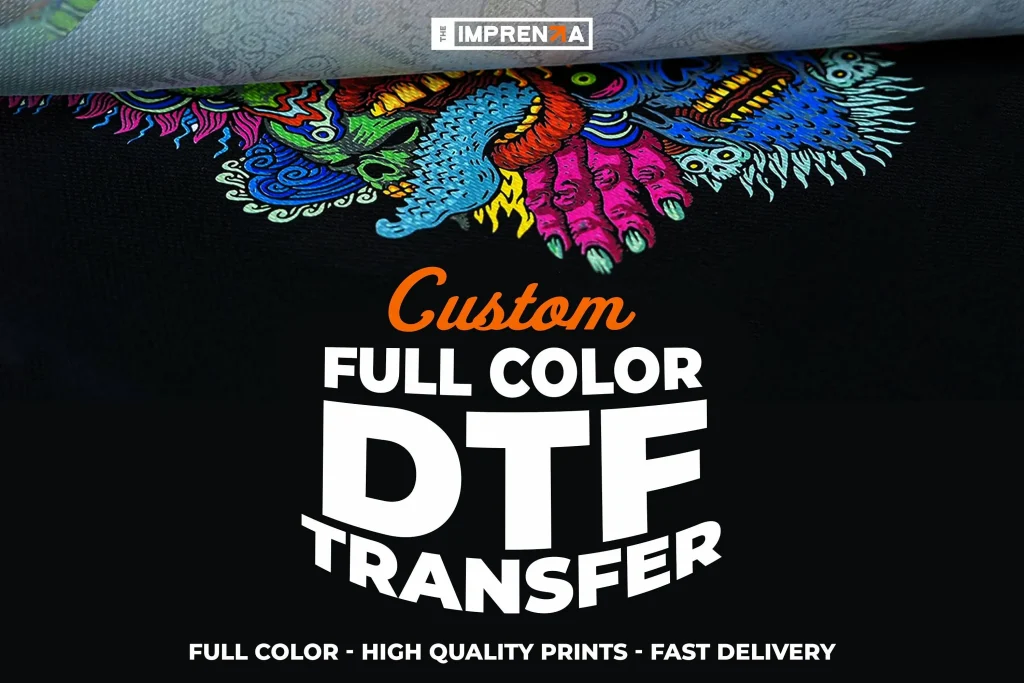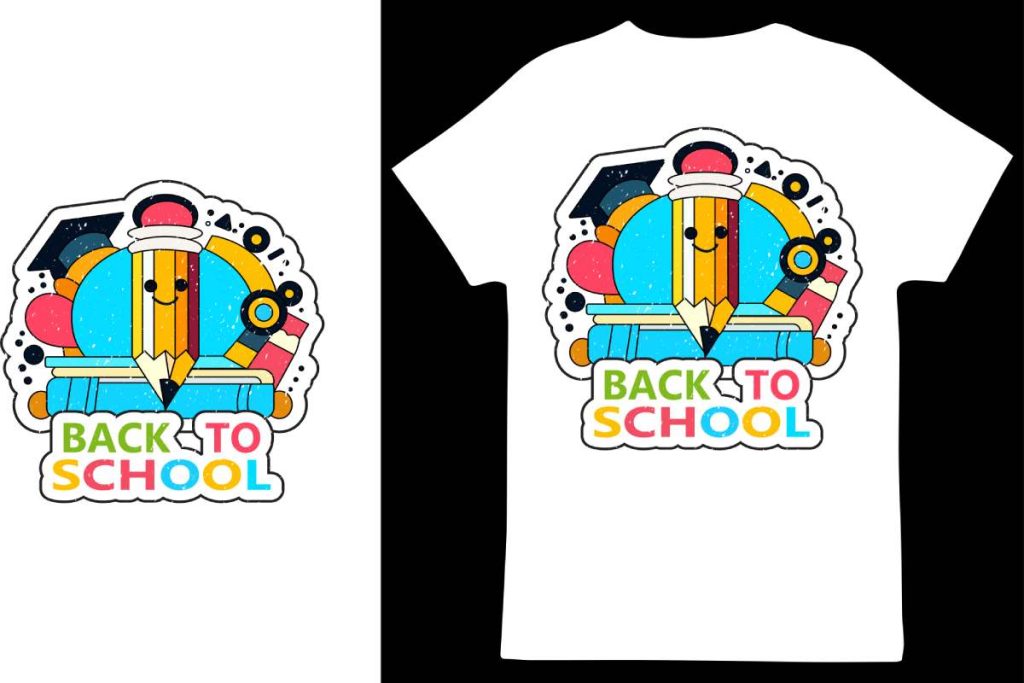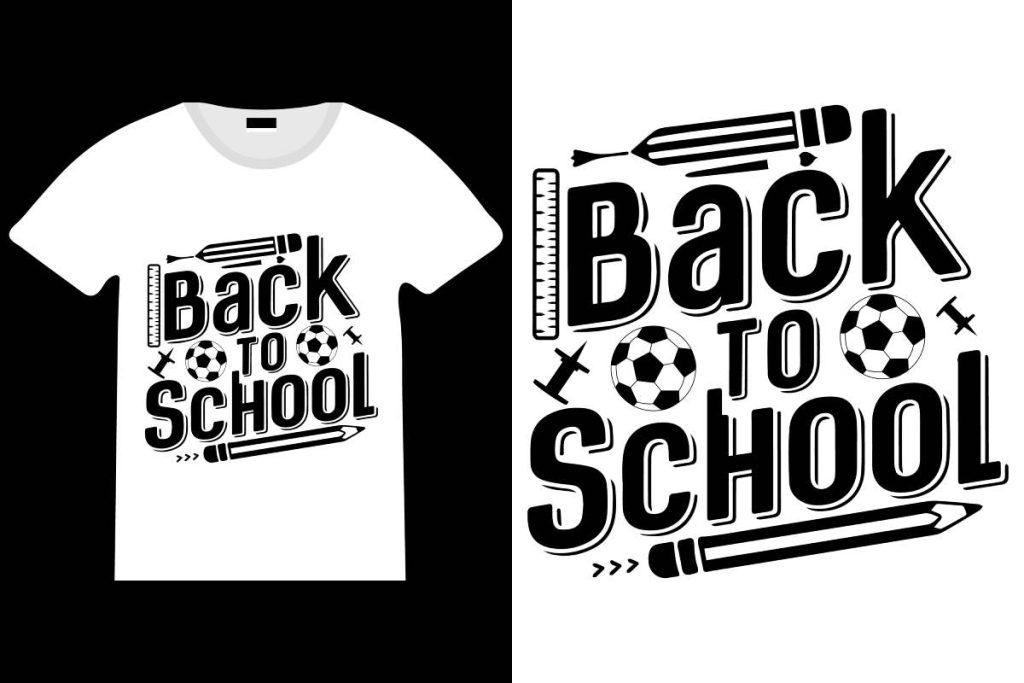In the ever-evolving landscape of DIY custom apparel, DTF transfers, or Direct-to-Film printing, are emerging as a revolutionary method that is capturing the attention of fashion enthusiasts and creators alike. This innovative printing technique offers a wealth of benefits, making it a standout choice for anyone looking to embark on custom garment projects. With remarkable ease of use and versatility, DTF transfers allow both novices and seasoned professionals to create vibrant, long-lasting designs that adhere beautifully to a variety of fabrics. By eliminating the need for expensive machinery and complex setups, this process democratizes the realm of custom apparel, inviting more individuals to unleash their creativity. Whether you’re producing personalized shirts for an event or launching a small business, the impressive capabilities of DTF printing can elevate your designs with remarkable efficiency.
Often referred to as Direct-to-Film printing, DTF transfers offer an exciting alternative for DIY enthusiasts venturing into the realm of custom garment creation. This contemporary technique, favored for its user-friendly nature and vibrant results, is quickly becoming the go-to option for those seeking to produce stunning apparel with minimal investment. With skills scalable for both hobbyists and small enterprises, this heat transfer method enables a seamless fusion of creativity and practicality, appealing to a wide audience. Unlike traditional options such as heat transfer vinyl, DTF printing ensures high-quality, durable items that can withstand the test of time and frequent wear. As creators explore this cutting-edge method, they find themselves breaking new ground in the fashion world, allowing for personalized expression in their clothing designs.
Understanding the Basics of DTF Transfers
Direct-to-Film (DTF) transfers are revolutionizing the landscape of custom garment projects by offering an innovative approach to printing designs on fabric. This method involves printing on a special film, which can then be heat pressed onto garments. This process is ideal for DIY enthusiasts as it simplifies the often intricate techniques associated with traditional methods like screen printing. The technology allows individuals to print intricate designs with ease, making it accessible even to beginners who may not have extensive experience in custom apparel creation.
With DTF transfers, the limitations found in other printing methods, such as the need for specialized printers or high initial costs, are eliminated. Users only require a standard inkjet printer to get started, making it a fantastic option for those just dipping their toes into the world of custom apparel. As more people research DIY custom apparel techniques, DTF becomes an increasingly attractive alternative that matches the modern trend of personalized fashion.
Benefits of DTF Transfers Over Traditional Methods
One of the most significant benefits of DTF transfers is their remarkable versatility across different fabric types, such as cotton, polyester, and blends. Unlike heat transfer vinyl, which may have limitations in terms of colors and fabric compatibility, DTF printing adapts fluidly to various textiles. This flexibility empowers creators to produce custom designs on diverse items, including t-shirts, hoodies, and bags, without the worry of mismatching materials. This kind of adaptability is key for those wanting to explore a wide range of creative ideas.
Moreover, DTF transfers are quickly becoming a go-to choice due to their vibrant prints that remain durable after multiple washing cycles. While many printing methods may falter in color intensity or suffer from peeling over time, DTF prints maintain their quality, allowing designers to present high-quality products confidently. This durability not only satisfies the consumer’s expectation for longevity but also enhances the reputation of those selling custom garments.
Exploring Cost-Effectiveness of DTF Printing
In the context of DIY projects and small business ventures, cost is often a major concern. DTF transfers stand out as an economical solution compared to traditional bulk printing methods that require substantial investment in equipment and inventory. With only a basic inkjet printer alongside low-cost materials like DTF film and adhesive powder, individuals can kickstart their custom apparel journey without hefty upfront costs. This financial accessibility allows passionate creators to focus on their craft rather than navigating complex financial barriers.
Furthermore, the efficiency of DTF transfers translates into significant savings on production costs. This method allows creators to print on-demand, minimizing waste associated with pre-printed inventory while also catering to evolving fashion trends quickly. Small business owners can react swiftly to market demands, respond to customer feedback, and experiment with new designs without the risk of excess stock. This blend of affordability and efficiency makes DTF printing an attractive option for anyone serious about custom garment creation.
Environmental Sustainability of DTF Transfers
As the global fashion industry grapples with its environmental impact, the sustainability of production methods is under scrutiny. DTF printing addresses these concerns by reducing material waste typically associated with traditional techniques like screen printing or heat transfer vinyl methods, which often produce excess byproducts. This on-demand printing model resonates well with environmentally conscious consumers and creators, promoting a more responsible approach to custom apparel.
Adopting DTF transfers allows fashion enthusiasts to not only create unique pieces but also embrace practices aligned with sustainability. The ability to print only what is needed significantly reduces the environmental footprint. Additionally, as more creators turn to DTF, they contribute to a community-focused effort to foster environmentally friendly practices within the craft and fashion industries.
DTF Transfers in the DIY Community
The rise of DTF transfers has sparked a vibrant movement within the DIY community, with countless enthusiasts sharing their experiences, tips, and tutorials online. Platforms like YouTube and Instagram are inundated with DTF project showcases that inspire creativity among users. These shared experiences help demystify the process and encourage even the most novice crafters to attempt their projects, fostering a supportive community centered around mutual learning and creativity.
The accessibility of DTF transfers has led to a surge in newfound hobbyists discovering the joy of creating personalized apparel. This trend has permeated into marketplaces such as Etsy, where individuals are leveraging DTF technology to offer unique designs that cater to niche markets. As more creators embrace this method, the quality and creativity of custom apparel available online continue to grow, resulting in a rich tapestry of options for consumers looking for distinct and personalized fashion.
Future Trends in DTF Printing and Apparel Design
Looking ahead, the potential for DTF transfers in the custom apparel market appears promising. As technology advances, we can expect even more enhancements in print quality, efficiency, and the variety of compatible fabrics. This evolution not only caters to the hobbyist but also appeals to professional designers and small businesses focusing on personalized garment lines. The ability to offer customized options that meet consumer demands swiftly will position DTF as a key player in the future of fashion.
Furthermore, as sustainability becomes an increasingly vital factor in consumer decision-making, the demand for environmentally friendly printing methods like DTF is bound to rise. This is particularly important in the context of a new generation of consumers that prioritize ethical production and sustainable choices. As the industry adapts, DTF printing’s role in facilitating unique, eco-conscious fashion will likely take center stage, paving the way for innovative practices in custom apparel design.
Frequently Asked Questions
What are DTF transfers and how do they work in DIY custom apparel?
DTF transfers, or Direct-to-Film transfers, involve printing designs onto a special film, which is then transferred onto fabric using heat. This method is popular among DIY custom apparel enthusiasts due to its ease of use and vibrant print quality. It allows creators to work with standard inkjet printers, making it accessible for various custom garment projects.
What are the key benefits of using DTF printing for custom garment projects?
DTF printing offers several benefits for custom garment projects, including vibrant and durable prints, ease of use with minimal equipment, compatibility with various fabric types, cost-effectiveness, and rapid production capabilities. These features make DTF transfers a preferred choice for DIY enthusiasts and small businesses.
Can I use DTF transfers on different fabric types for my custom apparel?
Yes, DTF transfers are highly versatile and can be applied to a wide range of fabrics, including cotton, polyester, and blends. This flexibility allows DIY creators to explore various material options for their custom apparel projects without compatibility issues.
How do DTF transfers compare to traditional heat transfer vinyl?
DTF transfers excel over traditional heat transfer vinyl by providing vibrant colors that do not fade easily after washing, and they integrate seamlessly with fabric. Unlike vinyl, which can feel heavy on the garment, DTF prints maintain a soft finish while remaining durable for custom apparel.
What equipment do I need to get started with DTF printing at home?
To start with DTF printing, you’ll need a standard inkjet printer, DTF film, adhesive powder, and a heat press. This minimal equipment requirement is what makes DTF transfers particularly attractive to DIY custom apparel enthusiasts.
Are DTF transfers an environmentally friendly option for custom apparel?
DTF transfers are considered more environmentally friendly compared to traditional bulk printing methods because they allow for on-demand printing, reducing excess inventory and waste. This approach aligns with the increasing demand for sustainable practices in the custom apparel industry.
| Key Aspects | Details |
|---|---|
| What Are DTF Transfers? | Printing designs onto a special film, then heat transferring onto fabric. |
| Ease of Use | Minimal equipment needed, making it accessible for DIY enthusiasts. |
| Vibrant Prints | Produces durable, high-quality colors that resist fading. |
| Material Compatibility | Works on cotton, polyester, and blends, allowing diverse applications. |
| Cost-Effectiveness | Economic option for small businesses and hobbyists. |
| Rapid Production | Speeds up order fulfillment and trend response. |
Summary
DTF transfers have emerged as an innovative solution for custom apparel, providing users with the ability to create vibrant designs easily and affordably. The technology not only simplifies the printing process but also ensures that the final product is durable and adaptable to various fabrics. As this method continues to gain traction among DIY enthusiasts and small businesses alike, it represents a fantastic opportunity to embrace creativity in the fashion world. With ongoing advancements and an increasing number of resources available, DTF transfers are set to lead the charge in the ever-evolving landscape of custom garment design.



